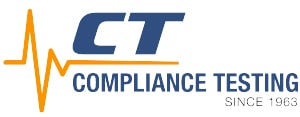Get Free Help From Our Engineers With FCC Part 15 Compliance
Need help complying with FCC Part 15 or other standards? We work with businesses and individuals across the country, including in , to achieve compliance with Part 15 and other FCC regulations.
Click the “Talk to Our Team” button or call us on 866-540-5287 to ask our engineers your question about FCC testing and compliance, or request a free quote for testing and achieving FCC authorization for your device.

By law, all electronic devices that can produce intentional or unintentional radiofrequency (RF) emissions need to comply with FCC regulations.
A testing standard applied to most electronic or digital devices, the Federal Code of Regulation (CFR) (Federal Communication Commission Part 15) encompasses regulations mandated for unintentional and intentional RF/emissions radiators.
The compliance process for FCC Part 15 depends on the specific category of equipment and compliance level under which your equipment falls — certification or Supplier’s Declaration of Conformity (SDoC).
Under FCC Part 15, devices that produce RF emissions are referred to as either FCC Class A or Class B devices.
Each class of device is regulated differently, meaning it’s important that you are aware of which class your electronic/digital device fits into.
For the most part, any commercial and industrial devices are considered Class A devices, while devices for consumer use are considered Class B devices by the FCC.
Below, we’ve explained the key differences between FCC Class A and Class B devices, as well as the steps you’ll need to take to make sure your device fully complies with regulations before entering the market.
For more information about FCC compliance, testing and certification, contact us online or call our team on 866-540-5287.
What are Class A Devices?
Class A devices are devices that are designed for commercial or industrial use. These devices are developed with business environments in mind and are not marketed for general consumer use.
FCC regulations allow Class A devices to emit a larger amount of radiofrequency energy than Class B devices. This is because these devices are intended for use in a working environment with equipment that’s designed to tolerate a certain level of RF interference.
Although Class A devices can emit a greater amount of radio frequency energy, these devices are still subject to emissions limits.
FCC rules state that devices classified as Class A need to have a label or display that clearly shows their Class A status. This is to prevent these commercial devices from being used in a residential environment, in which they could potentially interfere with consumer electronics.
What are Class B (Unintentional) Devices?
Class B devices include most devices that are specifically made and marketed for the general public. These devices are intended for use in a residential setting which will typically contain a range of equipment that may be disrupted by RF emissions.
Any device that requires an IC chip, a clock, an oscillator, or other electronic components, will typically be considered an FCC Class B device.
Many devices in a residential setting are sensitive to radio frequency. For example, emissions from devices that produce radio frequency energy can affect radio or television reception.
Because they’re designed for residential use, the FCC applies stricter emissions standards to Class B devices than to Class A devices.
Contrary to what many manufacturers believe, the FCC mandates that both Class A and Class B devices must be tested for FCC compliance. Part 15 Subpart B is an FCC rule that indicates certain unintentional radiator devices must be tested as well.
Like Class A devices, Class B devices must be labeled to provide consumers with information about their RF emissions.
The FCC Supplier’s Declaration of Conformity (SDoC)
The FCC SDoC requires manufacturers to prove that their products comply with strict standards established by the FCC. Emissions requirements and limits are listed on the Part 15 Subpart B document.
The only way a manufacturer can ensure their product is in compliance with limits is to have the product tested by an accredited compliance testing laboratory.
Examples of devices that are required to receive an SDoC or certification include:
- Class B personal computers, as well as the internal power supplies and CPU boards used to make Class B computers
- Class B digital devices/peripherals
- Access broadband over power lines
- Class A digital devices, external switching power components, and peripherals
What is Radiated Emissions Testing?
Radiated emissions testing, or electromagnetic interference emissions (EMI) testing, measures the strength of the electromagnetic field emitted unintentionally by a device.
These emissions are naturally generated within digital circuits. Radiated emissions are tested to measure the amount of the emissions produced by a digital device and determine if they comply with FCC emissions limits.
When products fail FCC compliance tests, this indicates that the product could interfere with the normal operation of electronic devices or interrupt certain frequencies.
In this case, identifying the specific cause of the failure and making any appropriate adjustments to components and/or the overall design is necessary before retesting the device.
Schedule a Consultation Today with Compliance Testing
It’s highly important to carry out FCC testing for your device before it enters the market. Devices that fail to comply with FCC regulations can potentially lead to fines and penalties or legal action from the FCC to prevent their sale to the public.
As specialists in FCC and international compliance testing, we can help you complete testing for your product and make sure it’s fully compliant with FCC regulations.
If your device requires FCC certification, we can also help you to complete the FCC certification process. Our experienced team has achieved thousands of successful certifications for clients in the United States and other countries.
For more information about FCC compliance, contact our team online, call us on 866-540-5287 or ask our engineers a question about the testing process.
Request a Free Quote From Our Team
Please enter your name, contact information, and any information about your device and the type of testing you need into the form below. Our team of engineers and compliance specialists will contact you as soon as possible with a free quote for your project.




